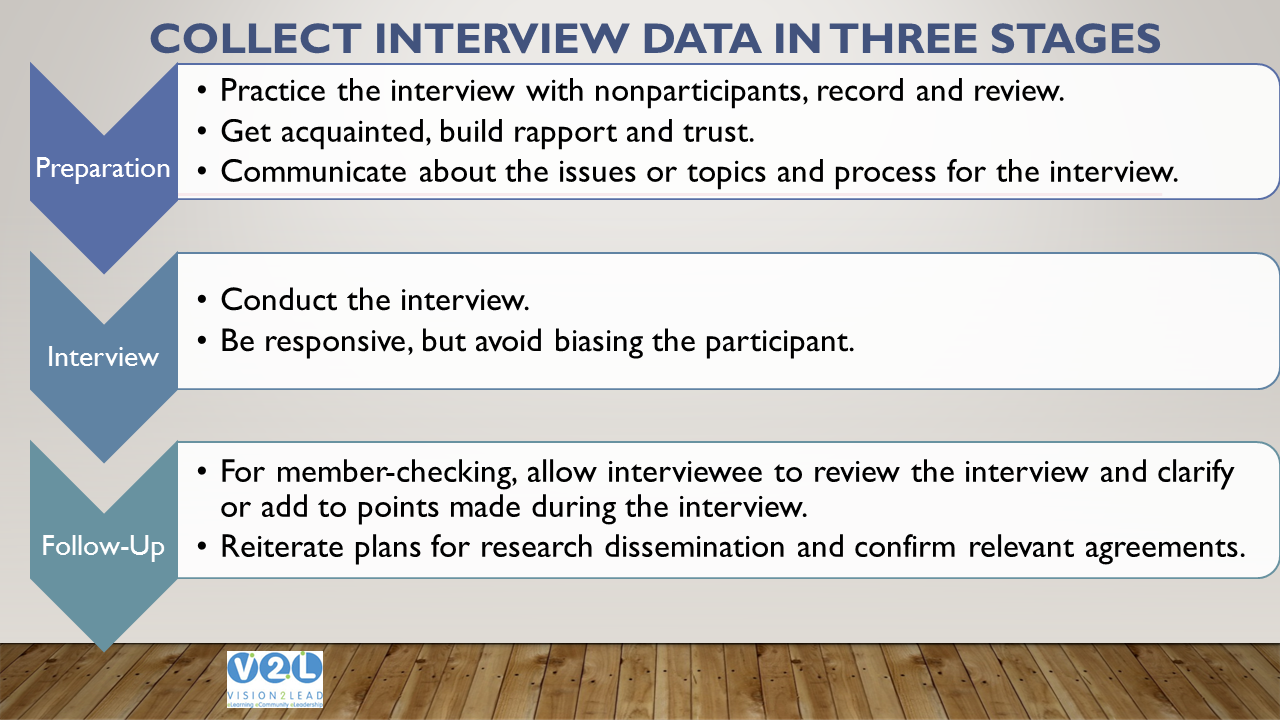Big Data Don't Cry: Facing Interview Participants
This series of posts corresponds to the 2018 SAGE Research Methods Open House. If you would like to access the SAGE e-books, articles, case studies, videos, and datasets mentioned in these posts, explore SAGE Research Methods with a free trial.
[su_dropcap style="default" size="3" class=""]M[/su_dropcap]any contemporary researchers rely on extant data or data sets. Archival materials, diaries, and Big Data have one thing in common: they don't cry. No
 matter how emotion-laden or sensitive the topic might be, the researcher does not have to look into the eyes of the people whose lived experiences are represented. Interview researchers engage very differently with data collection. How do we prepare to face real live participants who have feelings, pain, or strongly held opinions that may or may not relate to the topic we are studying? How do we prepare to meet participants online, if we are using video chat or other communications technologies for interviews?Many styles and types of interviews are conducted by qualitative or mixed-methods researchers. Once we have recruited participants and negotiated a consent agreement, there are three stages to think about for most interviews.
matter how emotion-laden or sensitive the topic might be, the researcher does not have to look into the eyes of the people whose lived experiences are represented. Interview researchers engage very differently with data collection. How do we prepare to face real live participants who have feelings, pain, or strongly held opinions that may or may not relate to the topic we are studying? How do we prepare to meet participants online, if we are using video chat or other communications technologies for interviews?Many styles and types of interviews are conducted by qualitative or mixed-methods researchers. Once we have recruited participants and negotiated a consent agreement, there are three stages to think about for most interviews. First, we need to prepare for the interview. This stage includes our own preparations as well as communication to ensure that participants know what to expect.Especially when you intend to conduct a semistructured or conversational interview, it is important to practice before encountering a real participant. Enlist friends, colleagues, or fellow students. If you are planning to use technology such as video/text chat, email or other electronic communications, make sure to use them for your practice sessions as well. I’ve found it to be quite helpful to record practice interviews so I could listen to the ways I introduced the interview, posed questions or prompts.It is also important to make sure participants are prepared for the interview. A short conversation or email exchange can help to allay any concerns they might have, and in the process, you begin to build rapport. Particularly when interviews will be conducted online, it is valuable to let participants know that an actual human being is on the other side of the monitor. Again, if the study concerns personal or sensitive topics, the preparation stage can help lay the groundwork for a successful interview.In the second stage we conduct the interview. For the purpose of this brief overview, self-awareness is a significant point to highlight. It is usually best to avoid showing some reaction that would indicate to participants your preference for a type of response. In other words, if the participants feel that you are upset or taken aback when they answer questions in a certain way, they might self-edit and avoid revealing truth you really were hoping to uncover in your research. Of course, some studies might entail more than one interview or interviews, combined with observations or other kinds of data collection. Resources listed below will provide details about the design of interviews and the ways this type of data collection can fit into the larger research design and proposal.The third major stage is often called member-checking. This means that you contact the participant after you have transcribed the interview to allow for confirmation that the participant’s intentions were accurately represented. This stage demonstrates respect for the participants, and at the same time, it allows participants to add or reinforce points that were made in the interview. It is possible that after the interview was concluded the participant thought about other examples or uncovered other feelings that they now want to share with you. This stage could be conducted via email, with an additional telephone call or even an additional meeting if needed.The follow-up stage is an ideal time to revisit your original agreement and to verify your plans for disseminating your findings.Adapt these stages to your study. The ways you approach these three stages will vary as appropriate to the methodology, research problem, purpose, setting, and population.Luckily, SAGE Research Methods (SRM) contains lots of resources for interview researchers. I curate two Reading Lists: one for new interview researchers, and one that includes more advanced resources including case studies and datasets. New interview researchers will find it beneficial to start with foundational books by Kvale (2007), Rubin and Rubin (2005). If you are thinking about using technology to communicate during one or more stages, consult Chapter 1 of the book I edited, Cases in Online Interview Research (2012). Once you understand the basics, look at the array of possible interview styles and types recommended in the second list.
First, we need to prepare for the interview. This stage includes our own preparations as well as communication to ensure that participants know what to expect.Especially when you intend to conduct a semistructured or conversational interview, it is important to practice before encountering a real participant. Enlist friends, colleagues, or fellow students. If you are planning to use technology such as video/text chat, email or other electronic communications, make sure to use them for your practice sessions as well. I’ve found it to be quite helpful to record practice interviews so I could listen to the ways I introduced the interview, posed questions or prompts.It is also important to make sure participants are prepared for the interview. A short conversation or email exchange can help to allay any concerns they might have, and in the process, you begin to build rapport. Particularly when interviews will be conducted online, it is valuable to let participants know that an actual human being is on the other side of the monitor. Again, if the study concerns personal or sensitive topics, the preparation stage can help lay the groundwork for a successful interview.In the second stage we conduct the interview. For the purpose of this brief overview, self-awareness is a significant point to highlight. It is usually best to avoid showing some reaction that would indicate to participants your preference for a type of response. In other words, if the participants feel that you are upset or taken aback when they answer questions in a certain way, they might self-edit and avoid revealing truth you really were hoping to uncover in your research. Of course, some studies might entail more than one interview or interviews, combined with observations or other kinds of data collection. Resources listed below will provide details about the design of interviews and the ways this type of data collection can fit into the larger research design and proposal.The third major stage is often called member-checking. This means that you contact the participant after you have transcribed the interview to allow for confirmation that the participant’s intentions were accurately represented. This stage demonstrates respect for the participants, and at the same time, it allows participants to add or reinforce points that were made in the interview. It is possible that after the interview was concluded the participant thought about other examples or uncovered other feelings that they now want to share with you. This stage could be conducted via email, with an additional telephone call or even an additional meeting if needed.The follow-up stage is an ideal time to revisit your original agreement and to verify your plans for disseminating your findings.Adapt these stages to your study. The ways you approach these three stages will vary as appropriate to the methodology, research problem, purpose, setting, and population.Luckily, SAGE Research Methods (SRM) contains lots of resources for interview researchers. I curate two Reading Lists: one for new interview researchers, and one that includes more advanced resources including case studies and datasets. New interview researchers will find it beneficial to start with foundational books by Kvale (2007), Rubin and Rubin (2005). If you are thinking about using technology to communicate during one or more stages, consult Chapter 1 of the book I edited, Cases in Online Interview Research (2012). Once you understand the basics, look at the array of possible interview styles and types recommended in the second list. These books, chapters, articles, cases, and videos are available in your academic library with a SAGE Research Methods subscription. Kvale, S. (2007). Doing interviews. Thousand Oaks: SAGE Publications.Rubin, H. J., & Rubin, I. S. (2005). Qualitative interviewing: The art of hearing data (2nd ed.). Thousand Oaks: SAGE Publications.Salmons, J. (Ed.) (2012). Cases in online interview research. Thousand Oaks: SAGE Publications.
These books, chapters, articles, cases, and videos are available in your academic library with a SAGE Research Methods subscription. Kvale, S. (2007). Doing interviews. Thousand Oaks: SAGE Publications.Rubin, H. J., & Rubin, I. S. (2005). Qualitative interviewing: The art of hearing data (2nd ed.). Thousand Oaks: SAGE Publications.Salmons, J. (Ed.) (2012). Cases in online interview research. Thousand Oaks: SAGE Publications.
